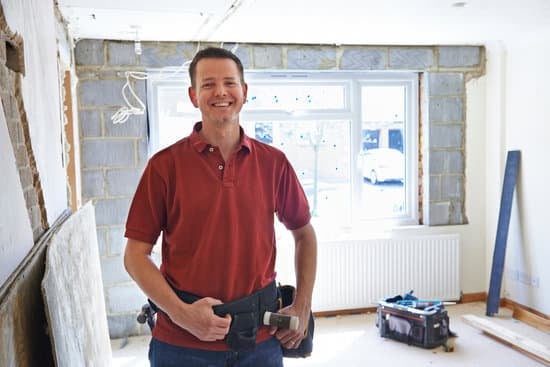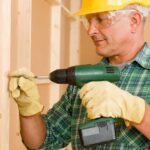Refinancing your home is a common strategy to lower your monthly mortgage payments or reduce the length of your loan term. But did you know that refinancing can also be used to fund home improvements? By tapping into your home’s equity, you can secure a new loan that allows you to renovate, upgrade, or expand your property. In this article, we will explore the concept of refinancing for home improvements and the benefits it can bring.
When it comes to refinancing, there are several factors to consider such as interest rates, loan term, and closing costs. Understanding these basics is crucial in order to make informed decisions about whether refinancing for home improvements is the right choice for you. Additionally, we will delve into the importance of home equity and how it serves as a financial resource for homeowners looking to enhance their properties.
Cash-out refinancing is another method that enables homeowners to access their home equity for renovations and upgrades. We will explain how this process works and highlight its advantages and potential drawbacks. Furthermore, evaluating and prioritizing your home improvement needs before considering refinancing is essential. We will guide you through assessing costs estimates and potential return on investment (ROI) so that you can make educated choices.
Overall, while refinancing can provide opportunities for funding home improvement projects, it is crucial to carefully evaluate the pros and cons before making any decisions. This article aims to equip you with the knowledge necessary to navigate this financial tool effectively. So let’s dive in further and uncover how you can refinance for home improvements and turn your dream renovation projects into a reality.
The Basics of Refinancing
Refinancing your home for the purpose of making improvements can be a smart financial move. However, before you embark on this endeavor, it’s important to understand the basics of refinancing and how it works. This section will provide a comprehensive overview of the refinancing process, including the role of interest rates, loan term, and closing costs.
- Interest Rates: When you refinance your mortgage for home improvements, you’ll be taking out a new loan with a different interest rate than your current one. It’s important to shop around for the best interest rate possible to ensure that you’re getting the most favorable terms. A lower interest rate can save you thousands of dollars over the life of your loan.
- Loan Term: Refinancing allows homeowners to adjust their loan term, which is the length of time it takes to repay the loan. You can choose to shorten or lengthen your loan term depending on your financial goals and circumstances.
Shortening your loan term may lead to higher monthly payments but can save you money in interest in the long run. On the other hand, lengthening your loan term can lower monthly payments but increase overall interest costs. - Closing Costs: Just like when you first obtained your mortgage, refinancing also involves closing costs. These costs include fees such as appraisal fees, title search fees, and lender origination fees. The amount varies depending on factors such as property value and location, and typically amounts to 2-6% of the loan amount. It’s important to factor in these costs when deciding whether refinancing makes sense for your home improvement project.
Understanding these key components is crucial when considering refinancing for home improvements. By doing so, you can make an informed decision about whether this financial strategy aligns with your goals and needs. Remember to compare interest rates from different lenders before proceeding with any refinancing options and carefully consider both short-term affordability and long-term implications.
Understanding Home Equity
What is Home Equity?
Before diving into how home equity can be used to finance home improvements through refinancing, it is crucial to understand what home equity means. Home equity refers to the current market value of a homeowner’s property minus the outstanding mortgage balance. In simple terms, it is the portion of the property that the homeowner actually owns.
Home equity can increase in two ways: through an increase in property value or by paying down the mortgage principal. As homeowners make mortgage payments over time, they build equity in their homes. Additionally, if property values in the area appreciate, homeowners can often benefit from increased equity without making any extra payments.
Using Home Equity for Financing
One of the main reasons why homeowners consider refinancing for home improvements is to tap into their home’s equity and use it as a source of financing. By refinancing their existing mortgage, homeowners have the opportunity to access their accumulated equity and obtain additional funds that can be put towards renovating or upgrading their homes.
When refinancing for home improvements, borrowers can typically choose between two options: a rate-and-term refinance or a cash-out refinance. A rate-and-term refinance allows homeowners to change the terms of their existing mortgage without tapping into their home’s equity. On the other hand, a cash-out refinance allows borrowers to borrow more than what is owed on their current mortgage and receive the excess funds as cash.
By using a cash-out refinance, homeowners can free up some of their built-up equity and use it for various projects like kitchen renovations, bathroom remodeling, or even adding an additional room to their home. This method provides an attractive alternative to taking on high-interest credit card debt or personal loans since mortgage interest rates tend to be lower.
However, it is important to assess whether this option aligns with your long-term financial goals and meets your specific needs before proceeding with refinancing for home improvements.
Utilizing Cash-Out Refinancing
Cash-out refinancing is a financial strategy that allows homeowners to access their home equity for renovations and upgrades. This concept involves refinancing the existing mortgage loan for a higher amount than what is currently owed, and receiving the difference in cash. The additional funds can then be used for various purposes, including home improvements.
One of the key advantages of utilizing cash-out refinancing for home improvements is that it provides homeowners with an opportunity to tap into the value they have built in their homes over time. Home equity refers to the difference between the current market value of a property and the outstanding balance on any mortgage loans secured by that property.
By refinancing and accessing their home equity, homeowners can leverage their investment to fund renovations or upgrades that can increase the value of their property.
To utilize cash-out refinancing effectively, homeowners should carefully consider their specific renovation needs and budget before proceeding with the refinancing process. Firstly, it is important to evaluate and prioritize which home improvement projects are necessary or most beneficial. This could involve considering factors such as cost estimates, potential return on investment, and personal preferences.
Once homeowners have determined their renovation needs and budget, they can work with lenders who specialize in offering cash-out refinance options. These lenders will evaluate several factors such as credit score, income stability, and property appraisal to determine eligibility for this type of financing. It is crucial for borrowers to compare different lenders’ offerings and consider factors such as interest rates, closing costs, and any associated fees before selecting a lender.
In summary, cash-out refinancing provides homeowners with a way to access their home equity for renovations and upgrades. It offers the advantage of leveraging one’s investment in a property to fund necessary or desired improvements. However, careful planning is essential when utilizing this financial tool. Homeowners should assess their renovation needs, research lenders specializing in cash-out refinance options, compare terms offered by different lenders, and understand all associated costs before making a decision.
Assessing Your Home Improvement Needs
Before considering refinancing for home improvements, it is crucial for homeowners to assess their specific needs and prioritize their projects. By evaluating home improvement needs, homeowners can determine the scope of work required and estimate the associated costs accurately. This helps them make informed decisions about whether refinancing is a viable option and ensures that they allocate their financial resources effectively.
One aspect to consider when assessing home improvement needs is the potential return on investment (ROI). While certain renovations can significantly increase the value of a home, others may have limited impact or even reduce its overall worth. By researching market trends and consulting with real estate professionals, homeowners can identify the projects that offer the highest potential ROI. Prioritizing these projects ensures that refinancing funds are used to enhance both the livability and value of the property.
Cost estimates are another crucial factor in assessing home improvement needs before refinancing. Homeowners should obtain detailed quotes from contractors or suppliers to understand how much each project will cost. This includes not only material expenses but also labor fees, permits, and any unexpected contingencies. By having accurate cost estimates in hand, homeowners can determine whether their current mortgage terms allow for enough equity to cover all desired renovations or if they need to refinance to access additional funds.
In summary, assessing home improvement needs is an essential step in deciding whether to refinance for renovations. By considering factors such as potential ROI and obtaining detailed cost estimates, homeowners can prioritize projects effectively and determine if refinancing is a suitable financial solution. Engaging in careful planning and research upfront allows homeowners to make more informed decisions about using refinancing as a tool for improving both their homes’ functionality and market value.
| Factors | Considerations |
|---|---|
| Potential Return on Investment (ROI) | Research market trends and consult with real estate professionals to identify projects with high potential ROI. |
| Cost Estimates | Obtain detailed quotes from contractors or suppliers to accurately assess the costs of each project, including material expenses, labor fees, permits, and contingencies. |
Finding the Right Lender
Researching Lenders
When it comes to finding the right lender for refinancing your home improvements, thorough research and diligence are key. Start by compiling a list of potential lenders and researching their reputation and track record. Look for lenders who specialize in refinancing options for home improvements, as they will have the expertise necessary to guide you through the process effectively. Online reviews and testimonials from previous customers can also provide valuable insights into the lender’s reliability and customer service.
Comparing Loan Terms
One important factor to consider when choosing a lender is the loan terms they offer. This includes aspects such as interest rates, loan duration, and closing costs. It’s crucial to compare these factors among different lenders to ensure you’re getting the best deal possible.
Remember that even slight differences in interest rates can significantly impact your overall savings or expenses over time. Additionally, take note of any additional fees or charges associated with the refinancing process, as they can vary widely between lenders.
Evaluating Customer Service
In addition to loan terms, it’s essential to assess the customer service provided by potential lenders. A reputable lender should be responsive, transparent, and willing to answer any questions or concerns you may have.
During your research process, consider reaching out directly to each lender on your list with a set of questions related to your specific refinancing needs. Pay attention to how they handle your inquiries – their level of professionalism and attentiveness can be indicative of their commitment to helping you throughout the refinancing process.
By researching lenders thoroughly, comparing loan terms, and evaluating customer service standards, you will be better equipped to find a reputable lender who specializes in refinancing options for home improvements. Remember that finding the right lender is a crucial step towards successfully funding your renovation projects through refinancing.
Qualifying for Refinancing
Qualifying for refinancing can be a crucial step in utilizing your home equity to finance your home improvements. Lenders consider various criteria when evaluating borrowers for refinancing, with a focus on factors such as credit score, income, and property appraisal.
One of the key factors that lenders consider is the borrower’s credit score. Having a good credit score is essential when seeking refinancing for home improvements. Lenders view a higher credit score as an indicator of the borrower’s ability to repay the loan. A lower credit score may result in higher interest rates or even rejection of the refinancing application.
Another important criterion is the borrower’s income stability and debt-to-income ratio. Lenders want to ensure that you have a steady income and will be able to make regular mortgage payments after refinancing. They will assess your debt-to-income ratio, which compares your monthly debt obligations to your gross monthly income. A lower debt-to-income ratio indicates better financial health and increases your chances of qualifying for refinancing.
In addition to credit score and income, lenders also evaluate the property’s appraisal value as part of the refinancing process. An appraisal determines the current market value of your home, which helps determine how much equity you have available for refinancing. Lenders typically require a certain amount of equity before approving a refinance loan. If your property’s appraisal value is lower than expected or if you haven’t built enough equity, it may impact your eligibility for refinancing.
It is important to keep these criteria in mind when considering refinancing for home improvements. It is recommended to check your credit score beforehand and take steps to improve it if necessary. Moreover, demonstrating stable income and reducing debts can increase your chances of qualifying for favorable terms on a refinance loan. Remember that each lender may have different requirements, so it’s worth comparing options and seeking guidance from professionals experienced in refinancing for home improvements.
The Pros and Cons of Refinancing for Home Improvements
Refinancing for home improvements can be an enticing option for homeowners looking to fund renovation projects, but it is important to carefully consider both the advantages and disadvantages before making any decisions. This section will present a balanced discussion of the pros and cons of using refinancing as a financial tool for home upgrades, taking into account factors such as interest rates, monthly payments, and long-term consequences.
One of the main advantages of refinancing for home improvements is the potential for lower interest rates. If interest rates have decreased since you initially took out your mortgage, refinancing can allow you to secure a new loan with a lower rate. This can result in significant savings over the life of your mortgage. Additionally, refinancing may provide an opportunity to switch from an adjustable-rate mortgage to a fixed-rate mortgage, providing stability and predictability in your monthly payments.
Another advantage of refinancing is the possibility of accessing cash through a cash-out refinance. By borrowing against the equity in your home, you can receive funds that can be used towards your renovation projects. This can be particularly beneficial if you don’t have enough savings or prefer not to exhaust your savings for home improvements.
Despite these advantages, there are also some potential drawbacks to consider when refinancing for home improvements. One such disadvantage is that refinancing often involves closing costs, which can be expensive. These costs typically include application fees, appraisal fees, and attorney fees among others. It is important to factor these costs into your calculations to determine whether the potential savings from lower interest rates outweigh the upfront expenses.
Additionally, extending the term of your loan through refinancing means that you will ultimately pay more in interest over time. While this may not be a concern if you plan on staying in your home for many years after completing renovations, it is essential to consider the long-term consequences of increasing your loan duration.
In summary, refinancing for home improvements has its pros and cons. It can offer lower interest rates and the ability to access cash for renovations, but it also comes with closing costs and potentially higher long-term interest payments. Ultimately, careful consideration of your financial goals and circumstances is necessary to determine if refinancing for home improvements is the right choice for you.
| Advantages | Disadvantages |
|---|---|
| Lower interest rates | Closing costs |
| Potential cash access through a cash-out refinance | Increased long-term interest payments |
Alternative Financing Options
While refinancing is a popular option for homeowners looking to fund home improvements, it is important to explore alternative financing options as well. These alternatives can provide additional flexibility and may be more suitable for certain individuals or situations. Here are some alternative methods for funding home improvements:
- Home Equity Loans: A home equity loan allows homeowners to borrow against the equity they have built up in their property. Unlike refinancing, which replaces the current mortgage with a new one, a home equity loan is an additional loan on top of the existing mortgage.
The interest rates on home equity loans are typically fixed, and the repayment terms range from 5 to 30 years. This option is best suited for those who have significant equity in their homes and do not wish to refinance their entire mortgage. - Personal Loans: Personal loans are unsecured loans that can be used for various purposes, including home improvements. These loans are typically obtained from banks, credit unions, or online lenders without any collateral requirement. The interest rates on personal loans may vary depending on factors such as credit score and income level. While personal loans may offer quicker access to funds compared to refinancing or home equity loans, they often come with higher interest rates.
- Government-Sponsored Programs: Several government-sponsored programs exist to assist homeowners with financing home improvements. One example is the Federal Housing Administration (FHA) Title I Property Improvement Loan Program that provides affordable financing options for qualified applicants.
Additionally, energy-efficient upgrades can be financed through programs like Property Assessed Clean Energy (PACE) loans offered by local governments or utility companies. It is essential to research and understand the eligibility requirements and terms of these programs before pursuing them.
When considering alternative financing options, it is crucial to carefully weigh the advantages and disadvantages of each method based on your specific financial situation and needs. Factors such as interest rates, repayment terms, eligibility criteria, and potential impact on your credit should be taken into account. It is recommended to consult with a trusted financial advisor or lender to determine the best option for funding your home improvements while ensuring long-term financial stability.
Conclusion
In conclusion, refinancing for home improvements can be a valuable financial tool for homeowners looking to upgrade their properties. By tapping into their home equity through the process of cash-out refinancing, homeowners have the opportunity to access funds for renovations and upgrades that can enhance both their living space and property value. However, it is essential to approach this decision with careful planning and research.
One of the main benefits of refinancing for home improvements is the ability to take advantage of lower interest rates. By refinancing at a lower rate than your current mortgage, you can potentially save hundreds or even thousands of dollars over the life of your loan. Additionally, by extending the loan term, you may also reduce your monthly payments, allowing more room in your budget for other expenses related to your home improvements.
It is crucial, however, to thoroughly evaluate your home improvement needs and estimate the costs before proceeding with refinancing. Take a close look at which projects are most important and prioritize those that will provide the greatest return on investment.
Remember that while refinancing can provide immediate funding for home improvements, it does come with potential long-term consequences such as extension of loan terms or higher overall interest paid. Therefore, careful consideration should be given to weighing these pros and cons before making any financial decisions.
Ultimately, while refinancing for home improvements may offer an excellent option for funding renovations and upgrades, it is crucial to consult with a reputable lender who specializes in this area. They will help assess your eligibility based on criteria such as credit score, income level, and property appraisal. Additionally, explore alternative financing options such as home equity loans or government-sponsored programs to ensure you are selecting the best option for your specific circumstances.
In summary, refinancing for home improvements can provide homeowners with a means to access funds necessary for transforming their living spaces. By taking advantage of lower interest rates and carefully assessing their needs and options before making any financial decisions, homeowners can make informed choices that contribute to not only a more comfortable living environment but also potentially increased property value.
Frequently Asked Questions
Can I refinance my house to make improvements?
Yes, it is possible to refinance your house in order to make improvements. This can be done through a cash-out refinance, where you borrow more money than the remaining balance on your current mortgage and use the extra funds for renovations.
The advantage of this option is that you can potentially take advantage of lower interest rates or better loan terms while also financing the cost of home improvements. It’s important to carefully consider the costs and benefits of refinancing before making a decision, as there may be fees or other expenses associated with the process.
Can home improvements be added to mortgage?
Home improvements can indeed be added to a mortgage. There are a few different ways this can be achieved. One common option is through a renovation loan or construction-to-permanent loan, where the cost of the improvements is rolled into your mortgage amount when you initially purchase or refinance your home.
This eliminates the need for separate financing and simplifies the payment structure. Another possibility is getting an additional personal loan specifically for home improvements, which could still be used alongside an existing mortgage but would involve separate monthly payments.
How does refinancing work for renovation?
Refinancing for renovation typically involves using either a cash-out refinance or a renovation loan to fund the improvements. In both cases, the borrower will need to have their property appraised in order to determine its current value and ensure that it supports the amount being borrowed for renovations.
After closing on the refinanced loan, the funds are usually disbursed directly to pay for approved renovations or repairs outlined in an agreement with contractors. The specific process may vary depending on lender requirements and program terms, so it’s important to discuss options with lenders and understand all terms and conditions before proceeding with refinancing for renovation purposes.

I’m thrilled to have you here as a part of the Remodeling Top community. This is where my journey as an architect and remodeling enthusiast intersects with your passion for transforming houses into dream homes.





